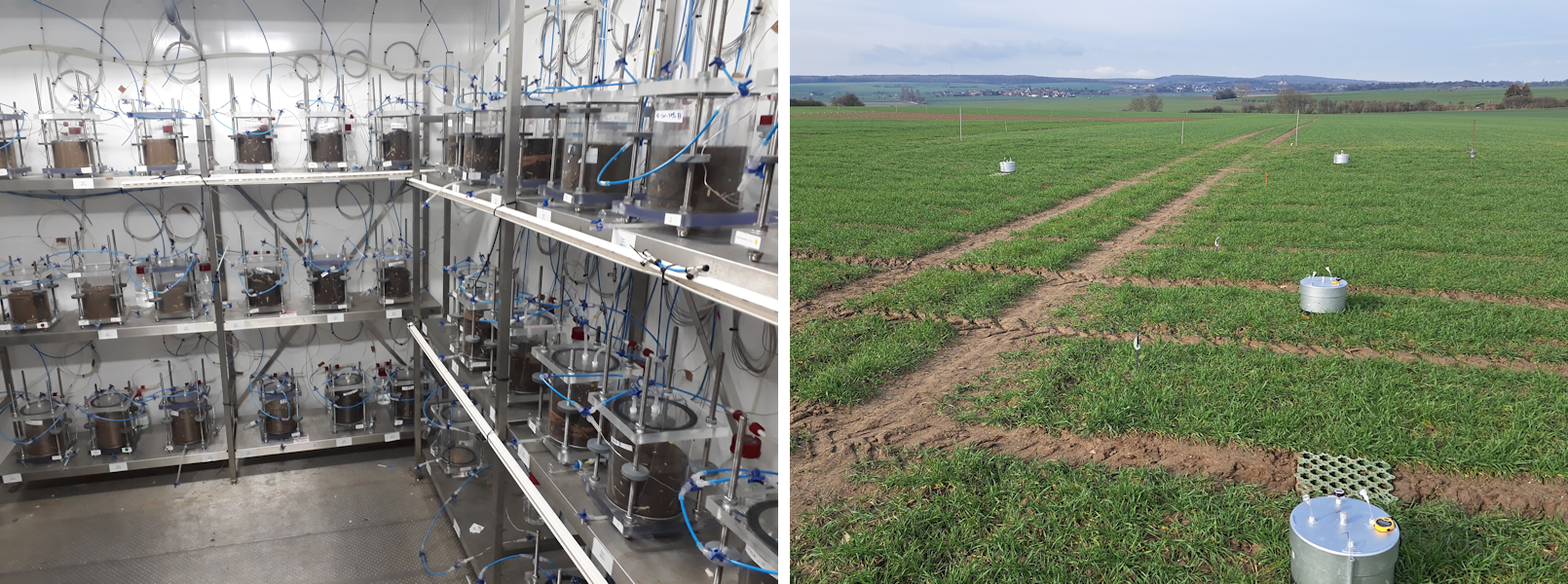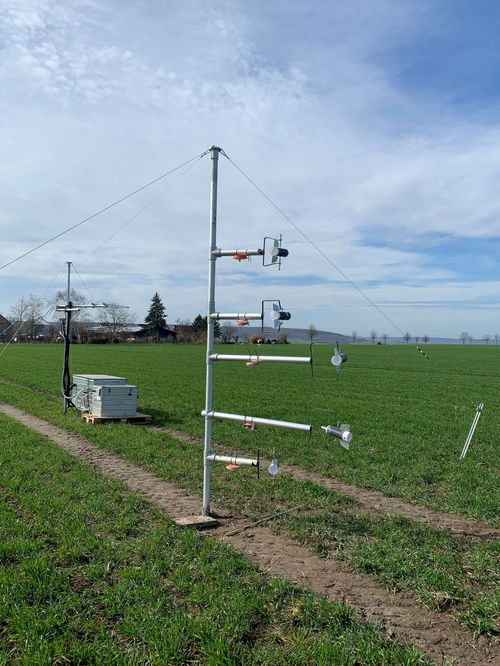Gaseous nitrogen emissions
Reduce climate-damaging nitrogen losses, secure yields and save fertilizer
Contact: Reinhard Well and Andreas Pacholski
Agriculture in Germany causes around 70 and 95 percent of the national total emissions of the trace gases nitrous oxide (N2O) and ammonia (NH3), damaging climate and environmental integrity. Agreements on climate protection and air pollution control set the target, and emissions have to be reduced. Agriculture is thus faced with the challenge of concomitantly meeting an increasing demand for food and renewable materials and reducing emissions, using nitrogen more productively and decreasing N balance surpluses.
The greenhouse gas N2O originates mainly from fertilization and nitrogen conversion in the soil. Ammonia is emitted from livestock farms as well as during storage and after the application of manures and anaerobic digestates. High ammonia emissions can also occur after the application of synthetic N fertilizers.
We measure, analyze and model how nitrous oxide and ammonia are formed, converted and released in agricultural soil-plant systems. The key target is the identification of measures for reducing emissions efficiently, and how these measures affect the fertilizer effect and yields of crops.
The focus of our research work is:
- process identification of the formation, transformation and emission of N2O and NH3,
- the evaluation of climate-friendly, efficient fertilization methods, including treatment and application techniques for organic manures,
- further development and assessment of measurement methods for emissions and the underlying processes
- derivation of site-specific emission factors for the improvement of emissions reporting
- modelling and regionalization of emissions from agricultural soils.
Our experimental approaches are cross-scale, from laboratory and field experiments to national surveys. An important basis for our research work are the laboratory facilities in the institute, which allow high-performance gas measurements, the analysis of stable isotopes and mesocosm experiments.


![[Translate to English:] [Translate to English:]](/media/_processed_/6/4/csm_titel_CO2Kampagne8_afeea2273e.png)
![[Translate to English:] [Translate to English:]](/media/_processed_/4/1/csm_titel_93px_CO2Kampagne8_9b0f3354d4.png)






